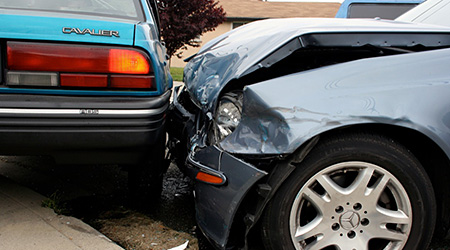How Much Does Auto Insurance Cost?

The cost of automobile insurance is determined by numerous diverse factors ranging from where you live to how you drive and what type of coverage you need. There is no blanket rate for a "typical" type of auto insurance and when it comes to auto insurance quotes it pays to shop around. In thoroughly understanding how auto insurance premiums are calculated and what causes these rates to be higher or lower you can make an informed decision and pick auto insurance which meets your needs.
Every state by law has an insurance mandate requiring a minimum of coverage. For example Colorado requires $25,000/$50,000/$15,000 while Florida requires $10,000/$20,000/$10,000. The three monetary values are as follows: minimum required for bodily injury per person / minimum required for bodily injury per accident / minimum required for property damage per accident. In reality this won't mean much to most consumers because they are unlikely to move to a different state simply because there is a different required minimum in auto insurance coverage. This however is good to understand because when you're receiving quotes from auto insurance providers these minimum requirements explain why you may be paying more than a friend or relative in another state.
The fact that an individual state has set a minimum requirement for auto insurance coverage does not mean that consumers are limited to these amounts. Vehicle owners can choose to increase these minimums if they require more protection but keep in mind that higher coverage amounts will directly increase premium costs. Some individuals worried about being sued my opt for higher coverages to protect their personal assets from a legal judgment. Depending on your net worth and legal exposure it may make sense to have more coverage than the required minimum.
Another key factor in determining auto insurance premiums is what type of coverage you carry. If you are currently driving a vehicle but do not own the title it is often required by the lender to have "full coverage". Full coverage normally entails comprehensive and collision with liability and underinsured motorist. Full coverage tends to protect you and the vehicle in all situations where an auto insurance claim may be filed. Whether you are "at fault" or you have been victimized by another driver your insurance coverage would be able to recompense all parties. If however you own the title and it is a 15 or 20 year old vehicle it is common for many owners to purchase only liability insurance. This is because comprehensive and collision would be a waste of money since it is unlikely to repair a 15-year-old worn out rundown vehicle.
Keeping in line with how much coverage you choose to purchase for your vehicle is also how much of a deductible you wish to carry. This is important to consider because the higher the deductible the lower the auto insurance premiums. It is often recommended by industry experts to have a deductible of at least $1,000. Some vehicle owners carry a deductible of $250 which results in significantly higher premiums with little to no value added benefit. This is because if a broken windshield results in a $350 expenditure but only happens once every 5 to 7 years, if ever, then the additional money paid in higher premiums could have easily purchased multiple windshields. In actuality, extremely low deductibles serve virtually no purpose since it is often cheaper to repair minor damage without filing an auto insurance claim. Additionally, making an auto insurance claim often results in increased premiums which sets you back even more financially.
Other factors which can affect auto insurance costs are how often you drive, how far you drive, the number of drivers, the drivers' ages, bundling with other insurance, and additional insurance riders such as rental car and towing benefits. The type of car you drive and whether or not you have received speeding tickets or other moving violations also impact auto insurance premiums. If you have a teenage driver and if that driver qualifies for a good student discount will increase or lower costs. Needless to say auto insurance costs are affected by many factors so be sure to provide all pertinent information when receiving a quote to make sure you're paying for exactly what you need. Many vehicle owners wind up paying for more coverage than required or not getting enough coverage because they fail to provide all relevant information when speaking with their auto insurance representative.







